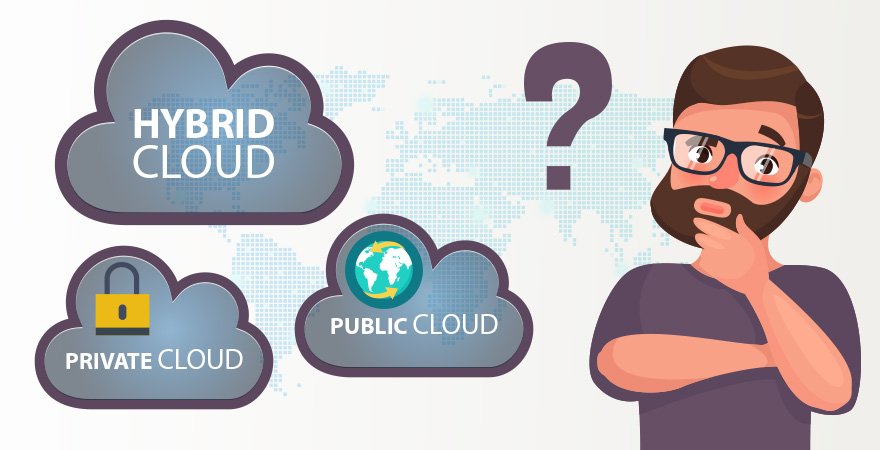Choosing the best cloud service provider can be tricky. There are many options available today.
Selecting the right provider is crucial for your business. It impacts your data security, costs, and performance. Many factors need consideration, from storage needs to customer support. You want a provider that fits your unique needs and budget. In this guide, we’ll help you understand what to look for.
We’ll cover the essential criteria to make an informed decision. By the end, you’ll be ready to choose the best cloud service provider with confidence.
Assess Your Needs
Choosing the best cloud service provider is a critical decision. To make the right choice, you need to assess your needs first. Understanding your specific needs can guide your decision-making process. It ensures that you pick a service that aligns with your goals.
Business Requirements
Start by identifying your business requirements. What are the main tasks you need the cloud service for? Do you need storage, computing power, or specific applications? Knowing this helps you narrow down your options.
Consider the size of your business. Larger businesses might need more advanced features. Smaller businesses might focus on cost-effectiveness. Think about your industry. Some industries have specific needs. Healthcare might need secure, compliant storage. E-commerce might need scalable solutions.
Scalability
Scalability is another key factor. Your business will grow over time. You need a cloud service that can grow with you. Check if the provider offers flexible plans. Can you easily upgrade your service as your needs increase?
Look for services with elastic scalability. This means they can handle sudden increases in demand. It’s vital for businesses with fluctuating workloads. Also, consider the cost of scaling. Some providers charge high fees for upgrades. Make sure the cost fits your budget.

Credit: www.dincloud.com
Understand Service Models
Choosing the best cloud service provider involves understanding different service models. Evaluate options like IaaS, PaaS, and SaaS. Each offers unique advantages.
Choosing the best cloud service provider starts with understanding the service models. Each model offers different levels of control, flexibility, and management. Knowing what each model offers can help you make an informed decision. Let’s dive into the three main service models: IaaS, PaaS, and SaaS.
Iaas
Infrastructure as a Service (IaaS) provides basic infrastructure resources. These include virtual machines, storage, and networks. You manage the operating systems, applications, and data. This model gives you more control but requires technical knowledge. It is ideal for businesses that need flexibility and scalability.
Paas
Platform as a Service (PaaS) offers a development environment. It includes infrastructure, middleware, and tools. Developers can build, test, and deploy applications quickly. PaaS handles operating systems, updates, and backups. This model is perfect for developers focusing on coding without worrying about managing the infrastructure.
Saas
Software as a Service (SaaS) delivers applications over the internet. Users access software through a web browser. The provider manages everything, including infrastructure and maintenance. This model is user-friendly and requires no technical skills. It is best for businesses needing ready-to-use applications, such as email, CRM, or office tools.
Choosing The Right Model
Selecting the right cloud model depends on your needs. IaaS is best for custom solutions and control. PaaS suits development projects requiring rapid deployment. SaaS is ideal for ready-to-use applications. Assess your technical skills, budget, and business goals. Choose a model that aligns with your requirements for a seamless cloud experience.
“`
Evaluate Security Measures
Choosing the best cloud service provider requires evaluating their security measures. Ensuring your data remains safe should be a top priority. This section will guide you on key aspects to consider.
Data Protection
Data protection is crucial. Ask the provider about encryption methods. Ensure data is encrypted both in transit and at rest. This reduces the risk of unauthorized access. Also, inquire about the backup procedures. Regular backups are important. They help recover data in case of loss or corruption.
Compliance Standards
Compliance standards ensure the cloud provider meets industry regulations. Check if they comply with standards like GDPR or HIPAA. This is vital if your business operates in regulated sectors. Ask for certifications or proof of compliance. It shows their commitment to maintaining security and adhering to legal requirements.

Credit: qentelli.com
Consider Performance
Choosing the best cloud service provider involves many factors. One key aspect to consider is performance. Performance affects your service’s reliability and speed. Poor performance can lead to frustration and lost business. Let’s dive deeper into two critical performance aspects: latency and uptime guarantees.
Latency
Latency refers to the delay in data transfer. High latency means slow response times. This can be a big problem for businesses needing real-time data access. Check the cloud provider’s data center locations. Choose a provider with data centers close to your users. This can reduce latency and improve performance.
Uptime Guarantees
Uptime guarantees show the reliability of the cloud service. Most providers offer a Service Level Agreement (SLA). This SLA promises a certain percentage of uptime. Look for providers with a high uptime guarantee. A 99.9% uptime guarantee means less than 10 minutes of downtime per week. Ensure the provider has a good track record of meeting their uptime promises. Reliable uptime ensures your services are always accessible.
Analyze Cost Structure
Choosing the best cloud service provider can be complex. One crucial aspect is analyzing the cost structure. Understanding the cost details helps you make informed decisions and avoid surprise expenses. Here’s how to do it effectively.
Pricing Models
Cloud providers offer various pricing models. Pay-as-you-go is popular. You pay for what you use. This model is flexible. Another model is subscription-based. You pay a fixed amount monthly or annually. This can be predictable. Some providers offer reserved instances. You commit to using resources for a longer period. It often comes with discounts. Compare these models. Choose the one that fits your needs and budget.
Hidden Costs
Watch out for hidden costs. Data transfer fees can add up. Moving data between regions or out of the cloud may cost extra. Storage costs can also vary. Some providers charge based on the amount of data stored. Others may charge for the duration data is stored. Also, check support fees. Basic support might be free. But advanced support often has a cost. Understand these hidden costs to avoid surprises.

Credit: www.netsolutions.com
Check Support Services
When choosing a cloud service provider, it is crucial to check their support services. Reliable support ensures that your issues get resolved quickly. It can save your business time and money. Below are some key factors to consider.
24/7 Availability
Your business might operate around the clock. So, you need a provider that offers 24/7 support. This means help is available whenever you need it. This can be crucial during unexpected downtimes. Always check if they provide support during holidays too.
Customer Reviews
Reading customer reviews can give you insights into their support quality. Look for reviews that mention support experiences. Check if the customers are satisfied with the response time. See if the issues were resolved efficiently. This can help you gauge the reliability of the support services.
Look Into Integration
Choosing the best cloud service provider involves many factors. One crucial aspect is integration. Integration ensures that your new cloud services work seamlessly with your existing systems and tools. This can save time and reduce complexity in your operations.
Existing Systems
First, evaluate your current systems. Understand how your existing infrastructure functions. Check if the cloud provider supports these systems. This compatibility can prevent disruptions. It also makes the transition smoother. Look at the provider’s documentation for supported systems. This step is essential to avoid future headaches.
Apis And Tools
Next, consider the APIs and tools offered by the cloud provider. APIs (Application Programming Interfaces) allow different software to communicate. Ensure the provider offers robust APIs. These APIs should be easy to use and well-documented. Check if they support the tools you already use. This compatibility can enhance productivity and streamline workflows.
Also, examine the available integration tools. These tools can simplify the process of connecting your existing systems with the cloud. Look for tools that are user-friendly and versatile. They should support various platforms and programming languages. This flexibility can be a significant advantage.
Review Provider Reputation
Choosing the best cloud service provider can be challenging. One key factor is the provider’s reputation. This ensures reliability and trustworthiness. Evaluating reputation involves several aspects. Let’s dive into them.
Market Position
Look at the provider’s market position. Are they a leader or a newcomer? Leaders often have proven track records. They invest in research and development. They offer advanced features and better support. Newcomers might lack experience but could offer unique solutions. Weigh the pros and cons.
Case Studies
Case studies provide insights into real-world applications. They show how a provider has helped other businesses. Look for case studies relevant to your industry. They highlight the provider’s strengths and weaknesses. Read about the challenges faced and solutions offered. This helps gauge if the provider can meet your needs.
Frequently Asked Questions
What Factors Should I Consider When Choosing A Cloud Provider?
Consider cost, security, scalability, and customer support. Evaluate the provider’s reliability and performance. Check for compliance with industry standards.
How Does Pricing Work For Cloud Services?
Cloud pricing varies by provider. Common models include pay-as-you-go, subscription, and reserved instances. Always compare pricing structures.
Which Cloud Provider Offers The Best Security?
Top providers like AWS, Azure, and Google Cloud offer robust security features. Evaluate encryption, compliance, and security certifications.
Can I Switch Cloud Providers Easily?
Switching providers can be complex. Evaluate data migration tools and potential downtime. Consider the compatibility of your applications.
Conclusion
Choosing the best cloud service provider can feel overwhelming. Focus on your needs. Compare features, pricing, and support options. Read user reviews for honest feedback. Consider security and compliance. Test the services if possible. Make an informed decision to ensure smooth operations.
Your business deserves the best fit. With careful evaluation, you can confidently select the right provider. Happy cloud computing!



Leave a Reply